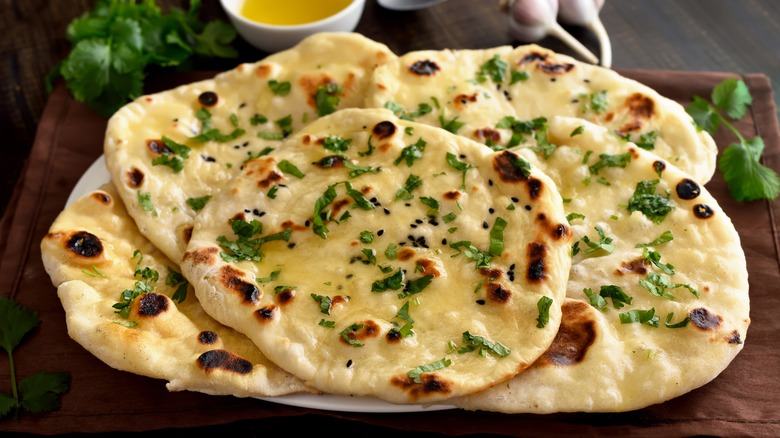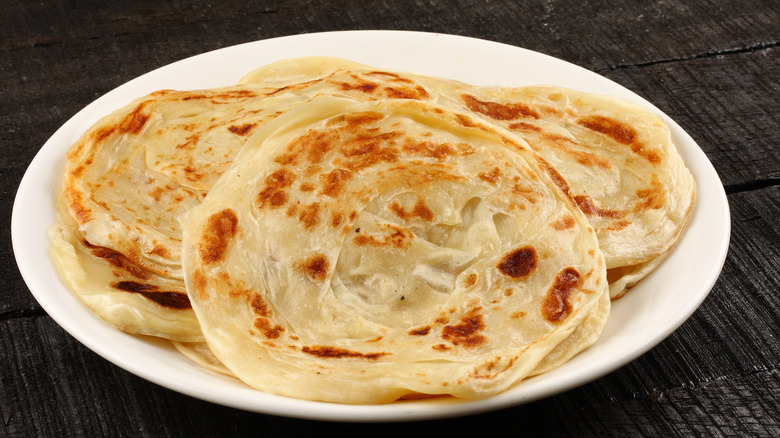The Traditional Cooking Method That Makes Paratha Different From Naan
From roti to dosa, the Asian subcontinent is known for its many delicious flatbreads, as each is distinct despite their shared profile. Still, it can be hard for a layman to tell each one apart visually. One pair of doppelgangers, naan and paratha, are particularly difficult to distinguish because they both have a blistered exterior.
Traditional naan is a leavened bread whose ingredients include flour, yeast, water, yogurt, butter/oil, and salt. Though it originated in Persia, this flatbread is most commonly associated with India, serving as a vehicle for curries and saucy stews. Paratha, on the other hand, is a pan-fried, layered flatbread that originated in Southeast Asia. Unleavened, this flatbread comprised of flour, oil, ghee, water, and salt is known for having a soft and stretchy inside and delicately flaky exterior. This heavenly combo is achieved by layering thinly rolled-out balls of dough and brushing them with oil or ghee before coiling it all into a spiral and rolling it thin again.
Unlike naan, paratha is often stuffed with fillings before cooking, as with the potato-packed aloo paratha and lamb-filled keema paratha. While the filled versions can work as meals on their own, plain paratha can also work as a starchy side to curries and dal. But what else sets these two flatbreads apart, you ask? The traditional cooking methods.
Pan fried vs. oven baked
Naan is inextricably linked with the tandoor ovens, which are large cylindrical clay contraptions that can reach scorching temperatures. Once naan dough has been prepped, bakers will slap the rolled-out flatbread against the side of the oven walls until they puff out and have a charred, speckled-brown exterior.
Paratha, meanwhile, is prepared using a different tool and an altogether different cooking method — fried in a tawa. Shaped like a disc, a tawa is a stone or steel frying pan commonly found in Southeast Asian kitchens that is used to make roti and dosa, in addition to this flatbread. The process of using a tawa begins by heating it and adding a good portion of oil or butter, then pan-frying the pre-shaped dough to a similar, char-dotted perfection.
Despite traditional preparations, cooks making these flatbreads at home are forced to rely on the convenience of a tawa or even a skillet or griddle. Since few beyond restaurants and street vendors are likely to have a tandoor oven handy, naan is commonly prepared in a convection oven as well. While some consider this a muddling of traditional preparations, others contend it's just a modern adaptation and a practical way to eat one's traditional cuisine.

